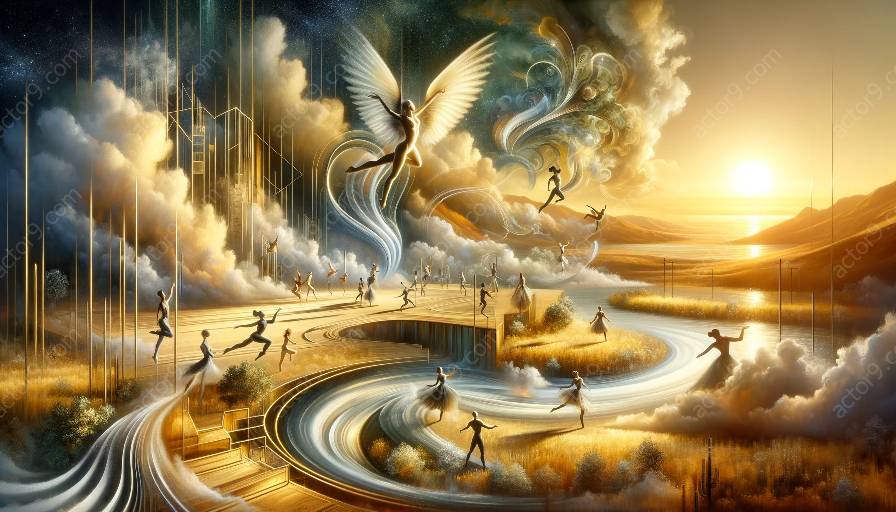Physical theatre and circus arts share a common ground in their emphasis on non-verbal communication and expressive movement. When these two artistic forms intersect, the result is a powerful fusion of storytelling, athleticism, and visual spectacle. In this topic cluster, we will delve into the principles and techniques behind visual storytelling in physical theatre and circus arts, examining how performers use their bodies and the surrounding environment to convey narratives and evoke emotions.
The Intersection of Physical Theatre and Circus Arts
Physical theatre and circus arts are both rooted in the physicality of performance, eschewing traditional dialogue in favor of body language, gesture, and movement. At their intersection, performers draw from a diverse range of disciplines, including acrobatics, aerial techniques, mime, clowning, and dance, to create compelling narratives that transcend language and cultural barriers.
This amalgamation of physical disciplines allows for a unique form of storytelling, where the body becomes the primary tool for conveying emotion, conflict, and resolution. The dynamics of power, vulnerability, and transformation are often explored through the physical interactions and relationships between performers, giving rise to captivating narratives that unfold in a purely visual manner.
Principles of Visual Storytelling
Visual storytelling in physical theatre and circus arts involves the strategic use of movement, gesture, and spatial relationships to construct narratives and evoke audience engagement. Performers utilize their bodies as expressive instruments, employing an extensive repertoire of techniques to convey characters, plot developments, and thematic motifs.
Through the manipulation of timing, rhythm, and spatial dynamics, performers create a visual language that is rich in symbolism and metaphor. This language often conveys complex emotions and ideas, inviting audiences to interpret and engage with the performance on a deeply personal level.
Creative Collaboration and Innovation
Collaboration plays a vital role in the creation of visually compelling narratives within the intersection of physical theatre and circus arts. Choreographers, directors, and performers work together to develop innovative movement sequences, striking imagery, and stunning physical feats that captivate and enthrall audiences.
Experimentation with props, set design, and interactive technology further enhances the visual impact of these performances, creating immersive experiences that transport audiences into fantastical worlds or thought-provoking scenarios.
Embodying Themes and Concepts
Visual storytelling in physical theatre and circus arts often revolves around the embodiment of themes and concepts through the physicality of the performers. From the struggle for freedom and self-expression to the exploration of human relationships and societal dynamics, these performances address universal themes that resonate deeply with audiences.
By embodying these themes through evocative choreography and daring physical feats, performers bring a heightened sense of immediacy and authenticity to the narratives, inviting audiences to connect with the performances on a visceral and emotional level.
Immersive Experiences and Audience Engagement
Immersive experiences are a hallmark of visual storytelling in physical theatre and circus arts. The spatial dynamics of the performance space, combined with the use of aerial apparatuses, dynamic set designs, and interactive elements, transport audiences into a realm where they become active participants in the unfolding narrative.
By breaking down the traditional barriers between performers and audience members, these immersive experiences foster a sense of intimacy and connection, allowing spectators to witness the stories from unique vantage points and engage with the performance in a deeply personal way.
As the boundaries between physical theatre and circus arts continue to blur, the art of visual storytelling evolves, pushing the boundaries of creativity, innovation, and human expression. Through the fusion of diverse physical disciplines, the intersection of these art forms continues to captivate and inspire audiences with its powerful narratives and timeless themes.




































